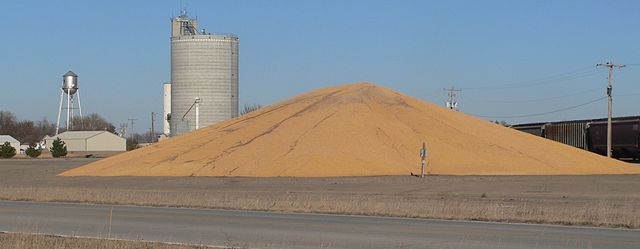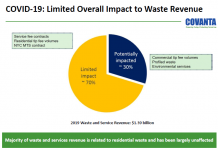by Jim Lane
As most know by now, the US and China have fired opening salvos in a trade war, with the US targeting a range of commodities including steel and aluminum, and China retaliating with, to date, stiff tariffs on a range of agricultural products, but primarily hitting soybeans and corn because of the volume of trade in those agricultural goods. Overall, China imports $24 billion of agricultural goods from the US and is a leading export market for the US.

The trade wars prompted North Dakota farmer Kevin Skunes, president of the National Corn Growers Association, to state:
“Farmers are busy with planting season but are moving forward without knowing who will buy their crop when it’s harvested later this year. With a 52 percent drop in net farm income over the last five years, and depressed commodity prices, this is not the time to face such a burden. This uncertainty impacts every step of the agriculture economy, from securing financing to marketing.”
A straightforward fix in E15 fuels
While the causes of world trade tensions are myriad, the agricultural remedy for grain-related distress is simple, and that is moving to year-round E15 ethanol in the US — reducing the need for corn farmers to seek export markets in the short-term as crop yields continue to rise through improved practices and better seeds. That’s well below the 20-25 percent baseload blends used safely and effectively for decades in Brazil.
Forcing corn farmers to scale back production or export grain at reduced prices into the smaller markets that remain open to them (and assuming that they will remain open should the trade wars widen) — that’s a recipe for economic disaster in the US Midwest and potentially for electoral disruption to follow — as farmers seek to institute new Government…as to them shall seem most likely to effect their Safety and Happiness,” as agriculturalist Thomas Jefferson spelled it out in the Declaration of Independence.”
The job, energy and clean air nexus all over again
Who pays the price? Although the US has made great strides towards energy independence, the country is still a net importer of petroleum — especially outside the South — and it’s only sensible to pivot towards more domestic production drawn from the replenishable grain belt instead of tapping one-and-done petroleum resources.
Capacity-building exercises would also prove of great benefit to the construction industries and a boost to Midwest-based jobs in the lead-up to the next two election cycles. It seems like a no-brainer for Republican parties across the spectrum to band together to shore up support in a swing region that handed control of the White House and the Congress to the GOP in the last cycle. And, if the EPA is on board in effectively structuring the demand, cellulose ethanol could receive a similar boost — which would cheer any fan of advanced technology and sharp[ reductions in greenhouse gas emissions.
There’s much of benefit to multiple parties from increasing ethanol demand — and it wouldn’t hurt either to take a good look at opportunities that may be present for sorghum and soybeans to increase their domestic markets right now.
We’ll see how the Administration responds.
This is the first of a two-part series in which we look at strategic shifts in global commodity prices and policies that could dramatically impact the outlook for biofuels, In this part, we look at grain markets and the em,erging US-China trade war.
Jim Lane is editor and publisher of Biofuels Digest where this article was originally published. Biofuels Digest is the most widely read Biofuels daily read by 14,000+ organizations. Subscribe here.








